Tesco: 66 points for Dave Lewis – No.5 – Brand Outlet

Steve Dresser
Founder of Grocery Insight & retail influencer
"The man supermarket CEO's turn to" - BBC"
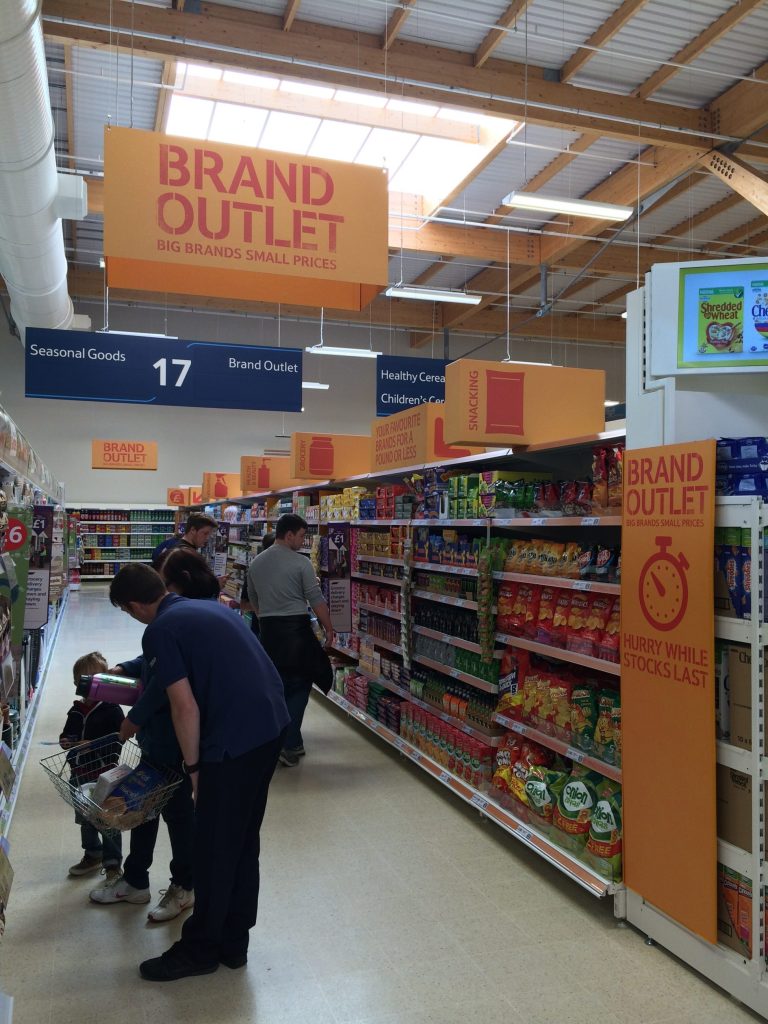
Today is 62 (sixty-two) days until Dave Lewis takes the helm at the UK’s biggest retailer. Grocery Insight are counting down to the start of his reign with an improvement point per day. First up, we had Twitter, then unerring focus on shrink, then we had Blinkbox and Hudl. Today we shift the focus back to trading with a look at Brand Outlet.
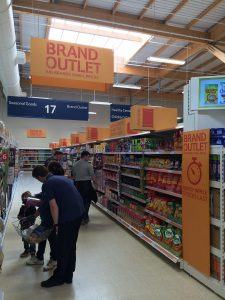
Part of the Tesco ‘let’s fight against anyone’ campaign, there have been a number of incarnations of the discount aisle, with the £1,£2,£3 shop, Bargains, Warehouse Clearance and a myriad of other campaigns. Primarily to fight against the rising trend of customers going to discounters / bargain stores, but it also served to fill some space in over spaced stores.
Perhaps one could argue this is part of the Tesco issue, fighting against every single competitor without focussing first on what makes them different in the market. Poundland are good, a solid business that retail everything at £1 and it’s difficult to compete with that model when you’re a retailer with several thousand SKU’s, a vast range and bigger stores.
Sure, be competitive within your mix, but why compete directly? Customers will come to Tesco, for Tesco. Not for Poundland.
Anyway – we’ve had a few variations of the ‘cheap aisle’ model.
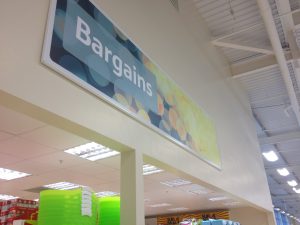

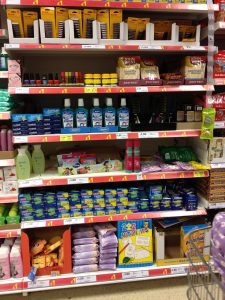
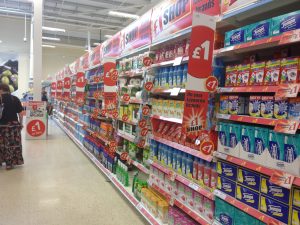
Nothing really ticked the box, in terms of a look / feel or indeed the product range. Warehouse clearances were good but some lines were WIGIG (when its gone its gone) and others seemed to be located within the core range, essentially turning the clearance space into promotional space.
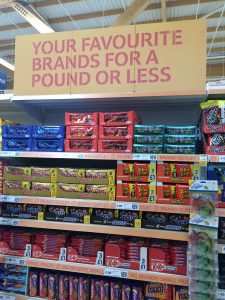
So, along comes brand outlet with some decent figures from the trial stores. At a high level, on paper and in the office it makes sense, gives a little more leverage to the value proposition and provides security to the cost conscious customer. ‘One’ PoS package too.
The issue in the real world is customers want value in the primary locations of products, not down an aisle. Customers forget, many ‘sleep shop’ and drift aimlessly around the store from one aisle to the next, they aren’t prepared to focus on one aisle.
Secondly, for products selling at a £1 or less, they can go to Poundland / 99p stores. Everything there is under one roof and one price, the aisle within a Tesco store, just confuses things.
There could be a saving grace if the products were ‘special’, imports, tertiary brands or ‘real deals’. If they offered a real reason to go down the aisle… But they don’t, in some cases they actively confuse the customer and dilute the overall value proposition.
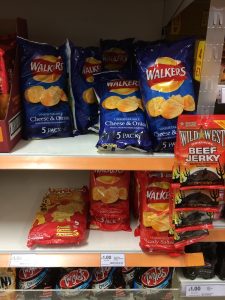
One area where Poundland were able to get traction was the stocking of brands who made specific SKU’s for them. So, in order to get Walkers into the range (made sense for Walkers given the volume Poundland achieve) they developed a special 5 pack to retail at £1.
Tesco for reasons best known to themselves have dropped in this SKU into their brand outlet, I don’t believe customers cross the road to Poundland for standard flavour 5pk Walkers at £1 when there is the plethora of multi-buys and brands available in Tesco.
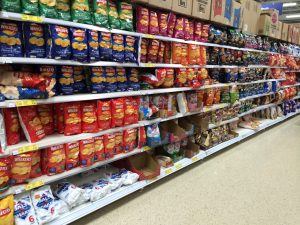
At the time of writing, Walkers were on a 4 for £4 promotion which matches the core Asda promotion, however this is only on until 19th August when it will revert to a 3 for £3.50 deal. A 6 pack of Walkers is £1.68 in the core range, multi-buys apart.
A price differential of 68p for 1 bag of Crisps in a multipack. Hardly driving value? The multibuy is good value but expensive – customers don’t always have £4 to spend on Crisps.
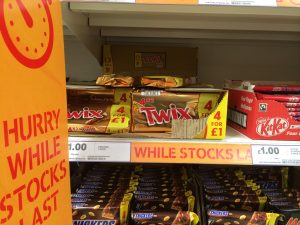
A key area for growth with single price / variety stores is impulse and confectionery features extensively. In this example Twix (4pk) are £1 at the brand outlet. Good value at £1 and there are Snickers / KitKat / Mars also within the range.
However go to the core aisle; IE the one where customers go to make purchases of Confectionary every week….
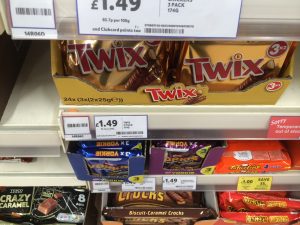
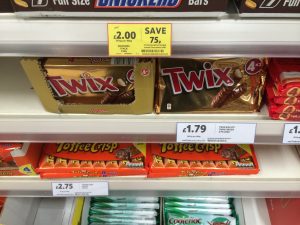
How does this make sense to the customer? How does it drive value? If anything it erodes value perception of the core range, needlessly adding SKU’s (complexity) and potentially leaving customers feeling that they’re paying two prices for the same product, depending on which aisle you walk down.
Whilst the idea is solid enough, there needs to be more radical thinking to compete with the discounters, half an aisle simply isn’t enough and adding cheaper, duplicated products down one aisle is crazy.
Like the issues that have plagued Tesco in recent years; it’s a decent idea, executed poorly. Lewis needs to consider initiatives such as within the overall shopping trip, and what’s right for the customer.
A weekly email covering the latest events in the industry; such as Tesco store operations, store visits or new promotional packages are all covered. Please visit our retail by email page for further information.
Grocery Insight provide market insight on the UK sector with a focus on individual retailers such as Tesco. This insight is useful to various stakeholders and due to my store based focus. Insight can be delivered to suppliers to focus on growth opportunities, analysts and investors to assess the business performance and long term outlook and retailers themselves to assess best practice.
